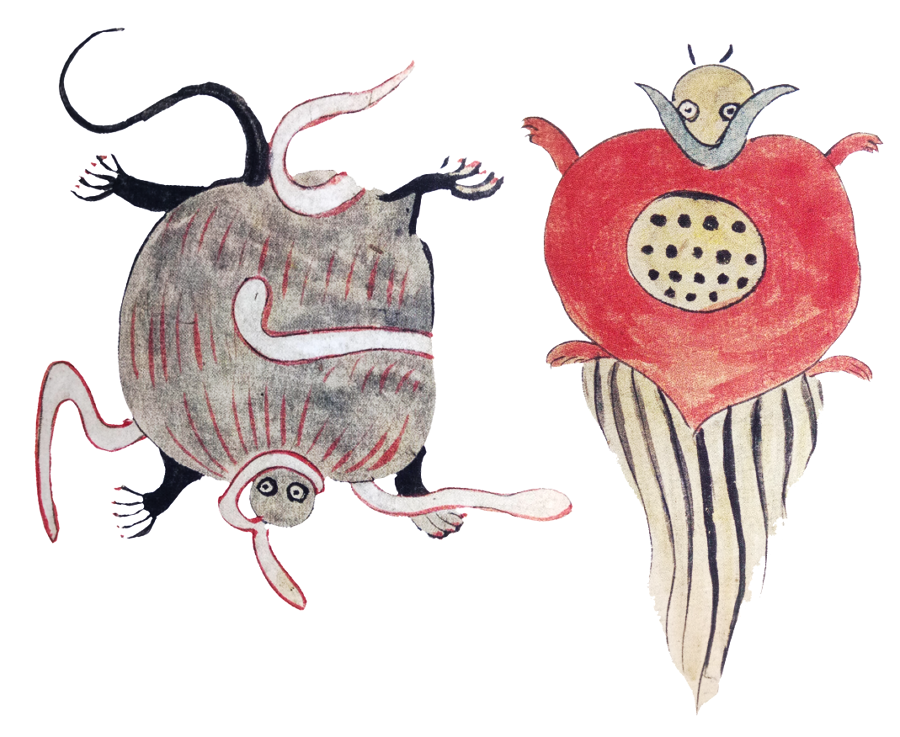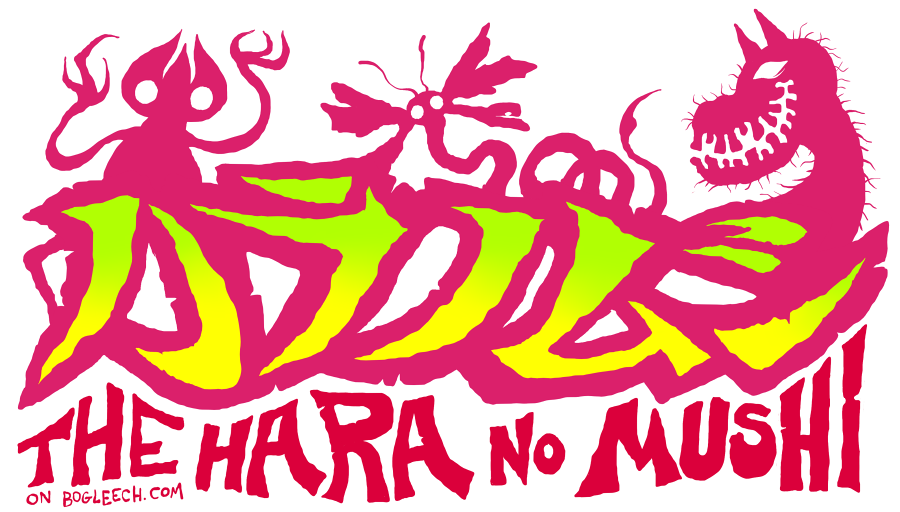
DAY FIFTEEN: YOUNOKAMESHAKU and INNOKAMESHAKU
("Yang Turtle Mass" and "Yin Turtle Mass")
Written by Jonathan Wojcik, Researched and Translated by Rev Storm
It's the Yang Turtle Mass that's given far more detail, and far from being a balanced counterpart, comes across more like an "upgraded" Turtle Mass, namely that it possesses a tough blue "hat" that protects it from any and all medicine. How, then, can you deal with this one? Apparently simply by eating wild soybean, and there's a really far-out reason why it works. A worm we talked about the other day could be broken into pieces by the "residual thought" of minced horse hairs, but my spouse translated this one first and explained the concept in detail here...I just keep changing the order of the bugs.
Wild soybean has a tough husk that has to be removed first, and the general idea of this action gets imprinted upon the bean. Think of it like an object haunted by whatever has happened to it, or a lot like the idea of "sympathetic magic" in other cultures. When the host eats soybean, the turtle mass takes on the thought of the husk being removed, and because its hat is supposedly shaped just like the soybean husk...off it goes! Leaving the Turtle Mass vulnerable!
Design Review:
Both of the turtle masses are great looking characters. The Yin mass with its swollen, baglike body, little black claws and whiplike tail is actually one of the creepier Belly Bugs if you ask me; the thought of this thing living inside of you, turtle-like but not at all a turtle, is really pretty dreadful. Yang is a lot flashier, more colorful and kind of cutesier, and definitely has the feel of a more "refined" or "evolved" version. I also notice that it has a flowing, hairy tail, which isn't addressed in its description, but there IS an idea that very ancient, powerful turtles acquire such a tail with age; the same reasoning for the tail of the Pokemon Wartortle.TODAY'S REAL WORLD PARASITE:
Trichinella spiralis
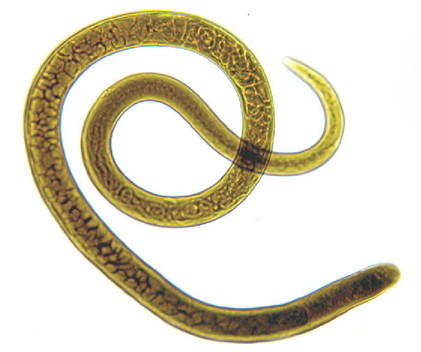
There are no human endoparasites resembling fat turtles, but there is a type of parasitic worm that protects itself in a sort of "husk" or "shell," and it's not entirely unlike wearing a sort of protective gear since it isn't actually the parasite itself that grows it.
Spiralis is yet another nematode worm, this time the tiniest that afflicts humans, and one we can pick up from under-cooked pork. Remember how the tapeworm lived, by the way? That the adult hangs out in the intestine and lays thousands of eggs, but the eggs are supposed to be excreted so the larvae can screw up some other creature?
Trichinella doesn't go to that trouble, because there's simply no point: the adult, intestine-dwelling female immediately dies after she gives live birth to around 1,500 larvae, so she doesn't need the host to stay healthy for her anymore. She packs up and skips town and lets her kids go hog-wild (haha, hog) in the old place, so unlike the tapeworm larvae, the same person who wound up with an adult Trichinella will also have to deal with the larvae tunneling around in their tissues and encysting themselves, which is where we get to that "husk" we talked about earlier...
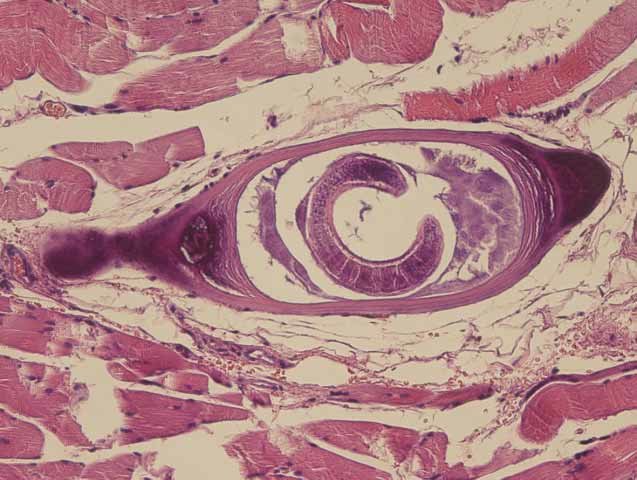
source
The cysts of most parasite larvae are produced by their own bodies or a simple healing response by the host tissues, but T. spiralis goes quite a bit further. The larval stage is so small that it can curl up inside of just a single human muscle cell without killing it, and there it stimulates the cell to grow very, very abnormally. What was a normal human cell with just a single nucleus becomes what is known as a "nurse cell," a multi-nucleus home that even develops unique blood vessel channels to keep the parasite nourished. Since this is modified from our very own tissues, our bodies have a difficult time ever recognizing the intruder, and it can't be harmed by anything that wouldn't harm a normal muscle cell, so medications are generally shrugged off as well. Possibly a far cry from a turtle monster with a safety helmet, but it's the spirit of the thing that we're counting.
Fortunately, the host body can eventually catch on enough that the nurse cell is finally rejected and calcified, petrifying into a tiny, bony nodule about the size and consistency of a grain of sand. This is the fate of nearly all Trichinella larvae ever born in a human host, since they will only ever mature if swallowed by another animal, and most of us never get eaten by a bear or a hyena.
NAVIGATION:
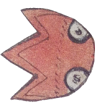
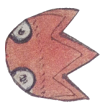






























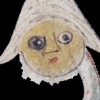



source


































